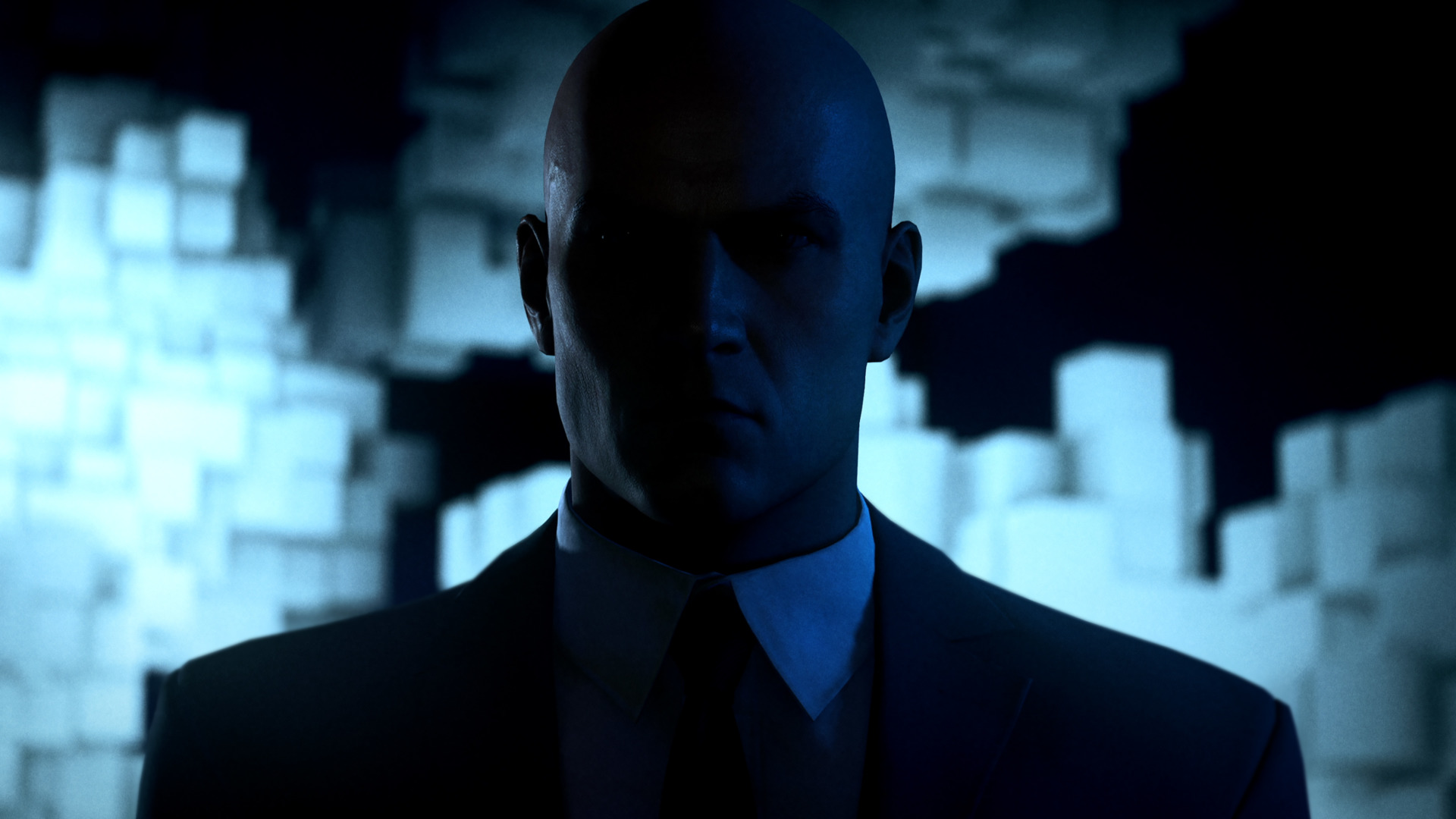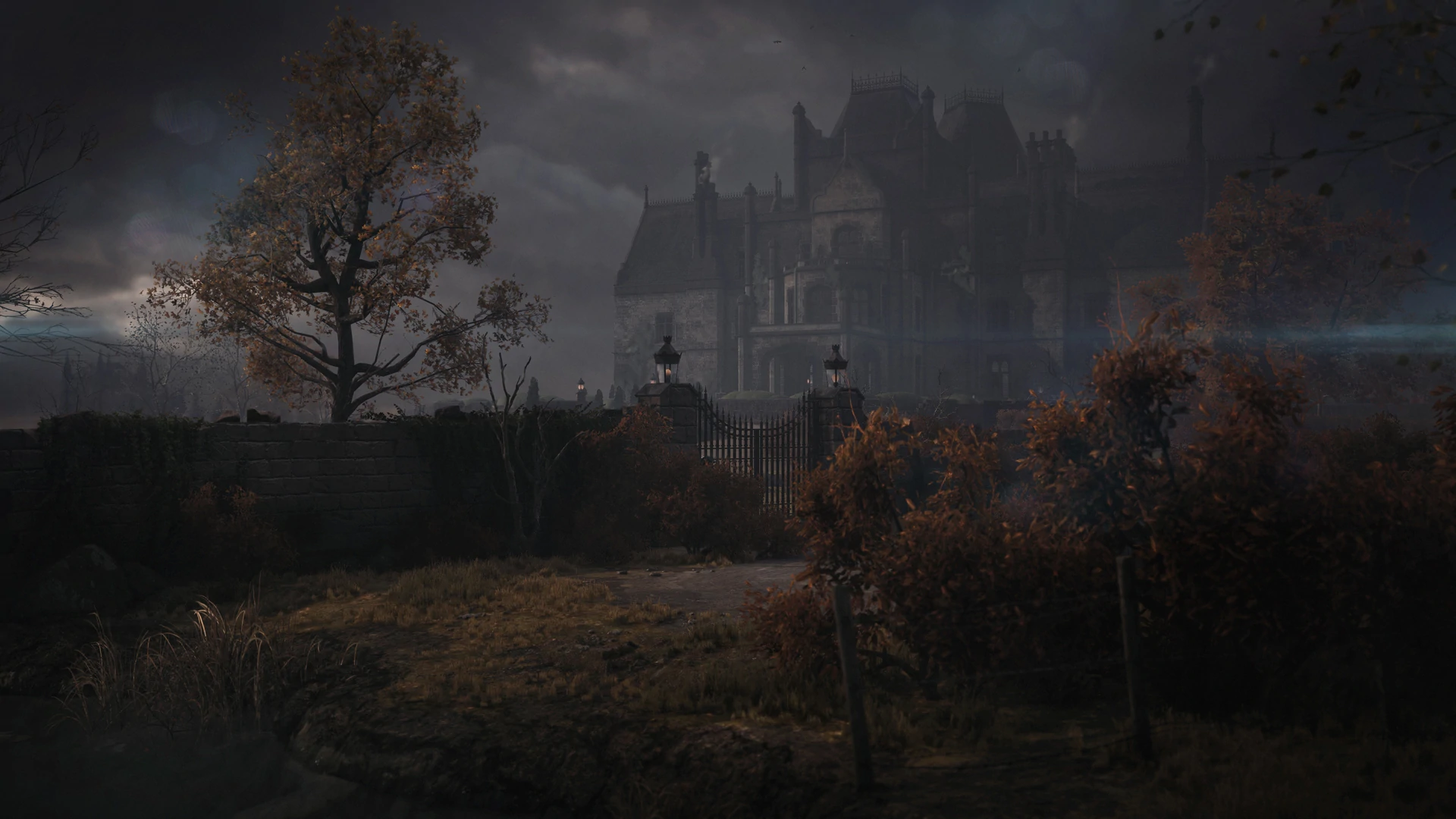
The strength of the third installment can make or break a trilogy. Bad ones spoil the entire franchise. Good ones make them immortal. When Hitman III debuts in the quiet winter of 2021, it shows that stealth games, like rock ‘n’ roll, will never be truly dead. After a publishing shuffle, IOI decided to self-publish the game, taking away their parachute, but giving themselves full creative control. It worked. Hitman III is confident enough in the reboot’s mechanics to play with them, daring the player to get up to all new kinds of mischief. Its NPC designs are more varied and vivid than ever, and in a time when we can’t travel, its levels provide a stunning escape. A year later, it’s become the best-selling Hitman game, proving that some IPs, like Grand Paladin, get better with age.
Its story, however, is the darkest. In the follow-up to Hitman 2, we learned that 47 and Lucas’ pact played right into the Constant’s hands. But it’s not enough for a chessmaster like Arthur Edwards to win the throne. He’ll need to protect it, and that means playing us against ourselves. The reboot has confirmed something we’ve dreaded since it was first implied: as a child, 47 triggered the car bomb that killed Diana’s parents. Arthur knew that the tenacity of their trust could spell his downfall, so he planted a seed of doubt, and now he waits for it to bloom. Greater fictional allies have become enemies over less. There’s no way this can end well. It’s just a question of how and when.
Maybe that’s Hitman III’s biggest surprise. The conflict turns inward, and it does something I never expected the series to do: it hurts. We lose someone we care about. When we swear another one is next, the plot snatches away something else that we didn’t expect. 47 and Diana confront beliefs they’ve held for decades and reconsider the entire paradigm of their lives. Level by level, the game strips the player of everything we’ve gotten used to - our mission goals, our playstyle, our world as we know it. By the end, we feel like a burned-out building. The characters who survive must, too. When you emerge with nothing, your only choice is to begin again.
Because Hitman has come to the logical climax of an assassination game. Sometimes with power, the only treatment is to amputate. Secrets have stayed secret too long. Empires have become entrenched. Some of our familiar institutions are part of that machine, so truly defeating the enemy will require sacrifice. We knew the trilogy would bring irrevocable change eventually. Stories are like mako sharks. If they don’t move forward, they die. It’s a testament to IOI’s character writing and worldbuilding that we end up mourning things we ought to find reprehensible. Is there a German word for kind of missing a lesser evil? If anyone could get us to feel sympathy for the Devil, Hitman could.
Costume-wise, several of the targets will hit a note that we left off on with the Constant at the end of Hitman 2. We can’t analyze them by themselves - they’re less about how they look and more about how they look compared to the people in their midst. That’s because we’re taking down a system, not individuals, and because Hitman III is about, above all else, controlling people. Some designs will even ask us to think about the ways that we control 47, meditating on autonomy in a player-character world. Twenty years ago, 47 chose his suit. Two years later, he chose the truth he liked. As the trilogy draws to a close, he’ll finally choose his path in life.

The game is afoot. With their assets gone and their names exposed, the Partners have fled to Dubai to formulate a plan. They’re staying at the Burj Al-Ghazali, Sheikh Omar’s crowning glory, and they’re his guests of honor at the skyscraper’s grand opening. When we open on our clone brothers, they’re about to crash the party in style. They parachute in and narrowly dodge a chopper flying away. We’ve missed one Partner, but never fear! We’ll still get the other two, and IOI couldn’t have picked a more fitting place for our revenge. Tall buildings have long served as symbols of hubris in fiction, and the Burj Al-Ghazali is a glittering beacon of modern wealth. The tower is also a sign of sudden, destructive change in tarot. You know what they say: pride comes before fall. For the Partners, it’s a long way down.
Given the role Providence played in getting the tower built, it makes sense that the Partners would use it as their hideout. Particularly Carl Ingram, whose fortune comes from fossil fuels, and who probably encouraged the alliance to begin with. Our oil-money Partner wears a plaid sportcoat with dark pants, a look that’s found new life in stores like Brooks Brothers in recent years. It’s stylish for a wealthy, somewhat old-school man again, a throwback to a Mad Men vision of the working world. The outfit also sees a curious popularity among ranchers, which hearkens back to his Protestant, bootstrappy Kansas roots. That ethos goes over great in American politics, the sphere in which Carl exerts most of his influence. His big, shiny belt buckle and lack of a tie seal the deal. He’s rich, but he’s still humble! Or at least he plays to that myth.
The thing is, that Midwestern ethic may not be a front. Carl has no interest in the inaugural three-martini lunch. His NPC loop keeps him on the tower’s penthouse floor, hovering around his office and insisting he not be disturbed. He’s so busy, in fact, that you have to make an appointment to reach him. Luckily for 47, a fellow assassin already has. Once we’ve disguised ourselves as the infamous Vulture, Carl gives us a briefing that feels suspiciously like an interview. When we pass his test - aren’t you glad you’ve never had a design test like that? - he reveals the real job offer: to kill Arthur Edwards. The whole time, he handles us with blunt, executive efficiency, and unlike most targets, he’s smart enough to keep his guards in the room. We may hate him, but Carl knows what it takes to keep Providence on top. Even the business of evil has to run like a business.
His fellow Partner, Marcus Stuyvesant, maybe… not so much. As I mentioned before, Marcus says the most by comparison. Most of the guests, like Carl or Marcus’ daughter, Cornelia, wear clothes that fit into a daytime-formal dress code. We see suits, short dresses, the traditional keffiyeh and thawb. They tell us it’s a professional event as much as a social one. That punctiliousness makes Marcus easy to spot, because his jarringly-casual outfit singles him out right away. If his sandals weren’t bad enough, he’s paired them with too-short pants. He hasn’t even bothered to button his shirt all the way. It’s disrespectful, and if he were anyone else, he’d be thrown out. But because he’s a financial tycoon, he gets away with it. (For a man who’s so worried about not being recognized, a modicum of effort to blend in wouldn’t hurt, would it?)
Marcus’ disregard shows us one of the most frustrating, counterintuitive rules of wealth: the richer you are, the worse you can dress. Once you hit a certain net worth, you can wear whatever you want, because you’ll be too powerful for anyone to challenge you. We see this play out all the time - tech giants in t-shirts, actors dining at expensive restaurants in sweatpants. In the right context, an inappropriately-casual getup can be an assertion of authority in and of itself. For a man like Marcus, it says that he’s too good for the event. The hosts should consider themselves lucky that he deigned to show up. It’s one of the world’s most exclusive crowds, but whatever. He could do better. Power can be dizzying, and he’s let the heights go to his head.

Alexa Carlisle can run from her comeuppance, but she can’t hide. It doesn’t take long for Diana to track the final Partner down. She’s faked her death and fled to the imposing Thornbridge Manor, the seat of her ancestral shipping and media empire. (One of IOI’s writers has to be a Downton Abbey fan. A wealthy newspaper family named “Carlisle?” I see you.) To maintain the ruse, her family has planned a lavish sham funeral. By the time 47 shows up, they need a real one. Alexa’s brother, Zachary, has been found dead in his bed, and she’s hired a private eye to discreetly investigate. The chaos around his obviously-unsavory exit leaves the house exposed, giving us a rare chance to infiltrate. Little do we know, it’s all about to go very wrong. But first, we have a murder to solve. And another to commit.
Brings me back to the Her Interactive Nancy Drew games.
Wait. “Solve?” That’s right. Death in the Family embarks upon a bold narrative experiment that reimagines Hitman’s mission stories. The level’s entrance hands the player a clear opening to disguise 47 as the private eye and find the culprit himself. From there, we can interview the household members and find clues, which can culminate in a variety of creative kills. It’s not the only way to beat the level. It’s still Hitman, after all. But it’s fun to put 47’s powers of observation to work, and it cajoles the family into opening up to us. When we approach them with a detective’s badge, they cooperate, blithely revealing information that might implicate them. Maybe not in murder, but Thornbridge Manor is a crooked house indeed. In true Agatha Christie fashion, everyone is up to something.
Once we’re close enough to ask about their alibis, we’re close enough to notice how nondescript their outfits are. In true noble fashion, the Carlisles have chosen clothes that look expensive and formal, but lack personality. The sons, Edward and Gregory, wear unremarkable suits. Their sister, Rebecca, wears a posh, but dated scarf and pant cut. Alexa ventures a little farther with the flowers on her skirt and vest. For an unloving matriarch, it’s an oddly grandmotherly touch. Only her grandson, Patrick, breaks the sartorial mold, and you just know that his relatives hope his long hair is a phase. (Then there’s Emma, whose skirt-and-sneaker thing seems dowdy even for them, until we realize that it gives her away from the start. The athletic shoes are practical for walking on the muddy ground that runs between the estate and the greenhouse full of poisonous plants.)
It doesn’t seem right, does it? If you had a country house, wouldn’t you sit around in something more imaginative? The plainness of the Carlisles’ wardrobe is intentional, and something that the British aristocracy has done for nearly a hundred years. To understand why, we have to move up one red-carpeted step to the masters of the understated outfit: the royal family themselves. Have you ever noticed how simple their clothes are? Really look at them. They’re always perfectly tidy and almost never take risks. Three-piece suits. Shells and sweaters. Sheaths with jewel necklines. A-line skirts. Solid colors. Sometimes floral, tweed, or plaid. They indulge in minimal embellishment or distinctive detail and let their ancestral jewelry do the talking, if they accessorize at all. Whether you call it “classic” or “boring” is a matter of taste, but once you see the pattern, it’s impossible to ignore.
Again, shouldn’t they be rich enough to get away with it? No. It reflects their stultifying need to appear neutral. The royal family avoids ideological association at all costs, and the press can turn anything from a glove to a hemline into a statement. In eschewing all clothes that come within ten miles of a trend, there’s nothing left but the unadorned. It can’t be controversial if it has no features in the first place. And in its attempt to be timeless, it asserts that they’re eternal, above the whims of style, above changes in power. They will - must - always be there. All you have to do is look at Princess Diana’s revenge dress to realize how easily upset the system is.
These aren’t even bad, I’m just a grumpy American.
Therein lies the difference between the genteel, landed Carlisles and the daring Washington twins or the careless Marcus Stuyvesant. Money acquired outside of that arcane social system may have something to prove, but it also has nothing to lose. Nobility, like royalty, has a way of life to protect, and it feeds itself by believing in its own permanence. We even see it in our Diana. As fluid as she is, she’s still a baronet’s daughter, so she’s been exposed to that conditioning. She operates with a cool confidence that her plans will always work, right up until she’s ambushed and Lucas dies under the Dartmoor trees.

When 47 resurfaces, we find him in Berlin. He looks cold. He looks lost. Olivia’s not taking his calls. The closest thing he had to a brother has sacrificed himself to save him. He has no idea whether Diana’s dead or alive. As rock-bottoms go, it’s hard to argue with this one, and 47’s not the only one the game has cast adrift. The player starts the level with no opportunities, no map, and nothing in our inventory except a burner phone. We can’t use the Instinct feature to reveal objectives, either, leaving us to wander until we figure out what to do. Some call the level a better Absolution than Absolution ever was. As we stumble through the dark in Lucas’ coat, we understand why. In the deep, haunting silence of the middle of nowhere, 47 has never seemed so bitterly alone.
Eventually, we come upon a fleet of unmarked black cars. As we follow their suspicious headlights, Olivia calls back. She tells 47 in a panic that the ICA is after them. She recommends we run. 47 knows that he can’t. His only shot is to head into the nearby industrial nightclub and hunt the agents down before he becomes their prey instead. What follows is a nightmarish turn on Chasing a Ghost, with enemies who fight back and no handler support. 47 will have to steal one of their earpieces and eavesdrop on them to find them, and the ICA’s finest won’t make it easy. All of Handler Jiao’s squad have disguised themselves as guests, security, or members of the local biker gang. Unless we get close enough to them to put ourselves in danger, there’s no way to distinguish them from other NPCs. The agents have completely subsumed themselves into their roles, becoming little more than extensions of the ICA’s will.
Except for one. On the wooded trail that leads to the club, we find Agent Price, a bald loner searching for an earpiece signal. Price is unique for a few reasons. First, he only appears if the player begins at the bus stop, the story-driven starting point. Our stripped-down briefing says that he’s a poor communicator, but an “excellent trapper,” which suggests a methodical MO. He’s also the only agent who hasn’t put on a disguise, staying - at least for now - in his black suit and overcoat. Roaming the start of the level, contacting his handler, dressed like that? Like Alma Reynard’s house, it feels uncomfortably familiar.
The game suggests that Price is wearing a run-of-the-mill ICA suit, so the whole team may have shown up in it before they disguised themselves. Still, is it really a coincidence that he’s paired it with a shaved head? That he’s kept it on this close to the club, where someone might spot him? 47 is an ICA legend, and we know from the Saints’ barks in Absolution that other agents want to emulate him. If these up-and-comers aspire to 47’s success, it’s not a stretch that some would style themselves after him, too. Right when we’re at our lowest, Price gives us a chilling view of what 47 means to the colleagues he’s about to kill.
That’s why IOI ensures we always meet Price the first time. Once we’ve seen him, we can recognize what’s really at stake. Not only are his squadmates in disguise, their NPC behavior mirrors actions that the player has 47 perform ingame. Green and Banner scout for their target. Tremaine waits in a sniper nest. Rhodes patrols the room where we’d go to destroy evidence. Davenport stands at a table and nurses a drink to blend in, while Chamberlin and Montgomery conceal themselves in the crowd. To make things worse, we hear Jiao panic as we pick them off, forcing us to contemplate how our own handler might feel. The level is about power, but not just 47’s sudden powerlessness. It’s about the strength of the influence that he’s been to the ICA. In massacring fellow agents who’ve learned from his expertise, he kills the thing that’s troubled the reboot from the start: his legacy.













